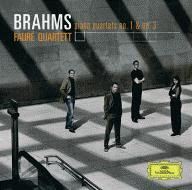Conducting your own music
There is a lot to be said for conducting your own works. For me, this has a lot more to do with the learning process than getting the music performed correctly. Any number of great conductors can read a score and pull out nuances of the music the composer may or may not have realised existed. But by getting to rehearse the music, going over the various elements of the music in preparation for a concert, I gained a different perspective of the music.
Prior to the first rehearsal of my Symphony No 1, preparing for the performance in June 2008, prior to preparation of the conducting score, I had to create the parts for performance. A full symphony (50 mins of music) with triple winds is a huge task. There are details in the various parts that aren’t necessarily included in the score. If a clarinet shifts from Bb to Ab or Eb, I had to make sure the transposition was done correctly, even though the score was concert pitch. Horns don’t typically like sharps (strings do), so there was adjusting of keys that didn’t necessarily coincide with the key of the score, but made the parts easier for the horn players to read. Then I wanted to make sure the parts didn’t have difficult (or impossible) page turns (Violin II part has 40+ pages). Some of this is accomplished with modern software (I used Sibelius ver 4), but software only goes so far and so, as the composer, I had to make numerous adjustment for each part. The list goes on, and with each adjustment came an in-depth view of the music I’d not seen during the composition. I didn’t make any sweeping changes to the music, but there were subtle bits that needed done to make the parts more readable.
Once the orchestra had their parts, I started marking the score. It was an amateur orchestra so I wanted to make sure I could prepare for all the various entrances of the musician. My music tends to be fairly complex, so giving a cue to everyone wasn’t possible; however, I could do sections or groups. Again, this made me look at the score in a very different way. When composing I don’t tend to think, “How long as the oboe player been resting?” Rather, I tend to think, “Now would be a good time to have the oboe sound,” regardless of the last time the oboe sound was present. In marking the score I became intimately aware of what the players would need in terms of conducting.
Prior to rehearsals, I also started working with the score and a midi realisation of the music to practice bringing in the various cues, all the while keeping the tempo. This was probably the most educational. The 2nd movement has a very fast tempo toward the end. There is a long section where every bar is counted in one as opposed to every beat of the 3/4. The pulse of the music was correct, but indistinguishable from one bar to the next. This created an impossible situation to let the players know where we were if anyone got lost. Since I was working with an amateur orchestra, I knew this section was going to be problematic. The music needed to be written in 6/8 or perhaps 12/8 to keep the same pulse, but allow for more clarity from the conductor. However, I’d already produced the parts, so I couldn’t re-write the time signature. It meant I had to do an outstanding job on the podium. There were several of these issues with the music, so future compositions will get a quick conducting review before finalising anything (particularly the parts).
The rehearsals brought to light even more aspects of my music I had noticed before. Some of the string writing is possible, but difficult, particularly over long stretches. Reminder accidentals aren’t something I particularly expect in music, but including them (which I hadn’t) would have avoided confusion and certainly some intonation issues. Subtle orchestrations were also seemingly lost in the translation from score to performance. This may not be the case with a professional orchestra, but thinking about the medium, performing in a large hall, the attempt to create a shimmering effect by alternating the same note from the E to the A string doesn’t really work when the brass are blaring away.
I tend to write driving music. There are a number of different styles of music from slushy to shimmering, from laid back to driven. The symphony definitely has a preponderance of driving moments, sections where the orchestra needs to be directly on the beat if not just slightly before it. A lot of this feeling has to do with the syncopated and off beat rhythms I tend to use (much like Leonard Bernstein). As a conductor I am going to need to spend more time in rehearsals getting the feeling of pushing forward rather than relaxing back.
Overall, the music holds together better than I expected. As a new composer, I am still in the insecure age of my career when I doubt if I've done something (anything) right. Sure, I have a midi realisation, but this doesn’t really reflect what live musicians actually sound like (not without a great deal of futzing - which I didn't do to the midi realisation). So, during rehearsals, I was pleasantly surprised to actually hear the themes and layers I'd wanted coming out of the orchestra.
Ultimately, music is all about getting to the performance. Rehearsing for the first concert of my first symphony opened up my eyes to a variety of different view points of the music I hadn’t realised before. I look at music in a very different way now, picking up nuances of the parts, pulse and orchestration, and not just my own compositions, but the music of other composers as well.

Comments